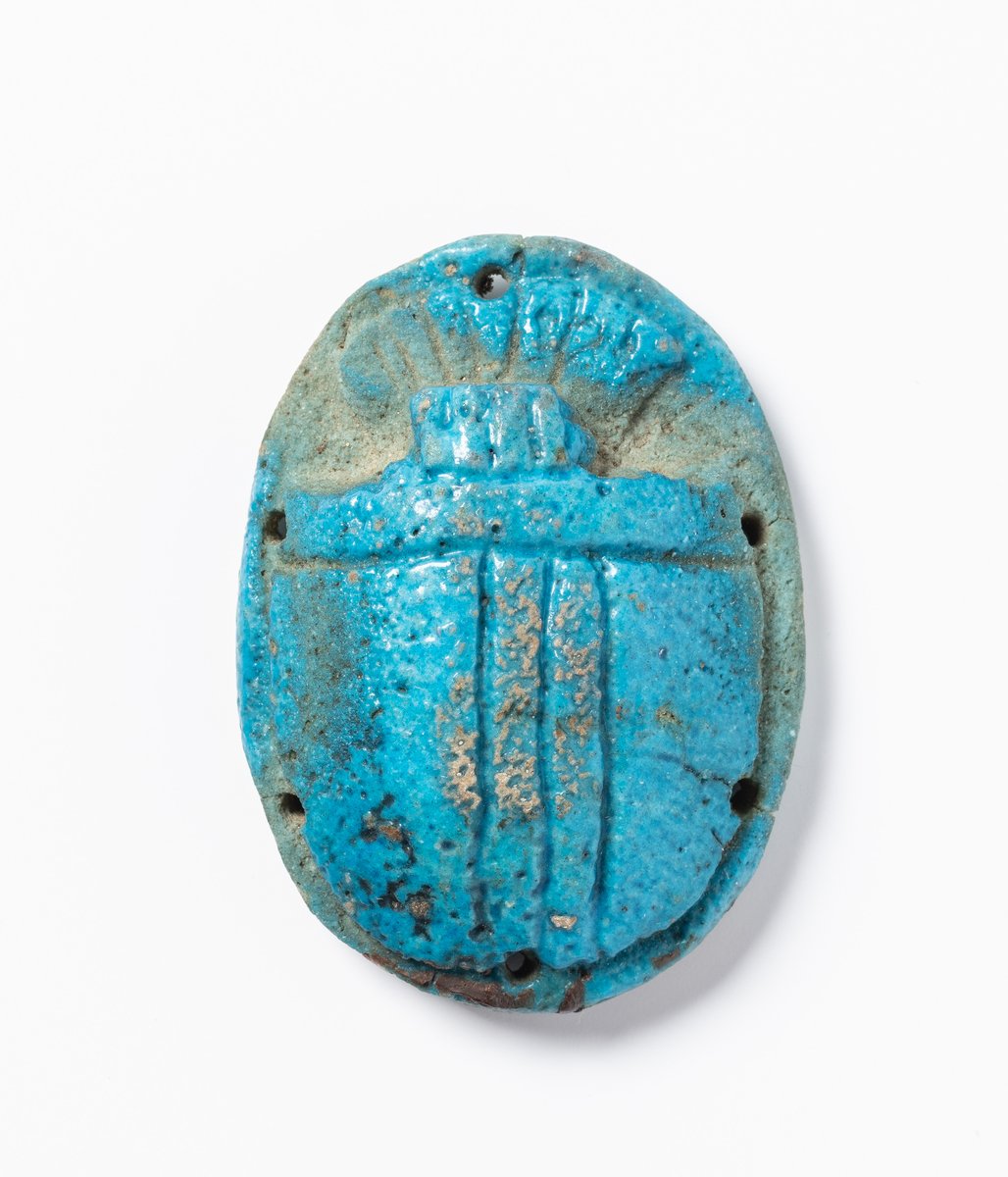
Scarab
Egyptian Art
| Place of production | Egypt |
|---|---|
| Date | 1070–525 BC |
| Object type | statuette |
| Medium, technique | Terracotta, moulded |
| Dimensions | 11.5 x 10.3 x 7.4 cm |
| Inventory number | 51.2236 |
| Collection | Egyptian Art |
| On view | This artwork is not on display |
This piece exemplifies a group of ancient Egyptian figural representations, made of baked clay or less frequently limestone, depicting females reclining on a bed or crouching, standing alone or accompanied by a small-sized figure of a child, sometimes bordered by images of vessels, cosmetic tools or various objects of daily use. This type seems to have been introduced in the New Kingdom and continued to be used until the end of the Late Period. This terracotta plaque can be considered a unique piece in the sense that it depicts not one but two female figures in relief, lying side by side. Both are nude with slender bodies, wearing an ornamental collar and a tripartite wig, which falls on the shoulders in two thick braids and reaches to the oval breasts. Each figure holds her right arm along the body, whereas the left is bent with the hand placed near the right breast recalling the posture of nursing. There is no contact between the figures. Despite the equivalence of posture and the accessories indicated, the two representations are not identical; thence it can be argued that the plaque was made in a double-figured open mould. To date, exact parallels are not known, yet there is no ground to question its authenticity.
Prevailing scholarly theories tend to label these objects as fertility figurines that may have been deposited as votive offerings in tombs, domestic shrines and temples of the goddesses Hathor, Mut or Anuket to promote successful conception and grant divine blessings in the perilous time of early childhood. Owing to their high popularity, they were fashioned in large quantities in settlements and ceramic workshops belonging to temples and cult centres.
This record is subject to revision due to ongoing research.